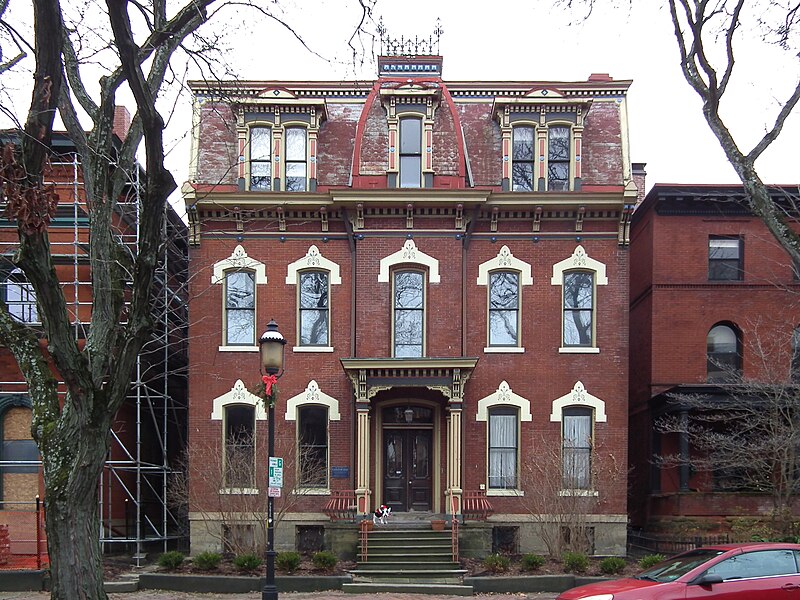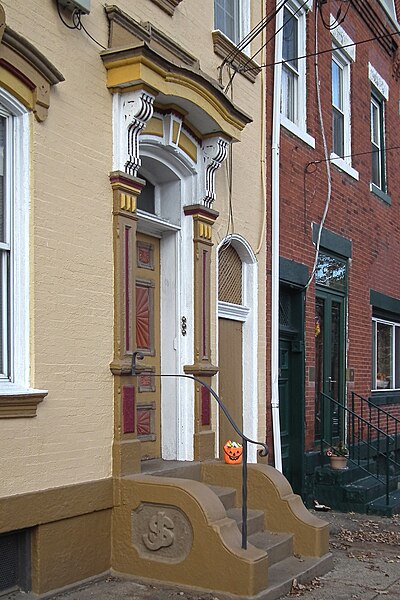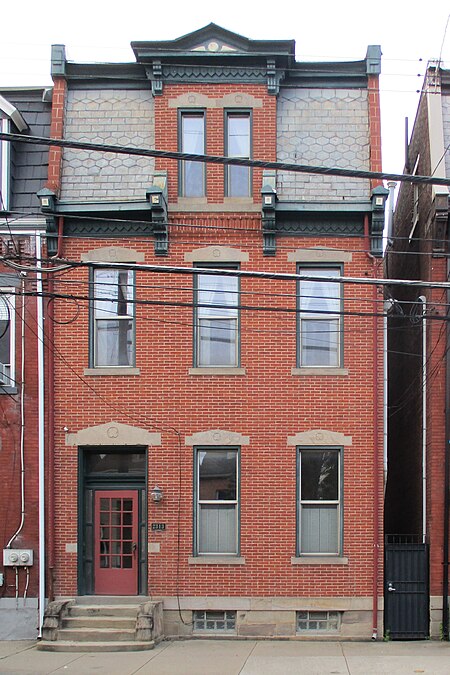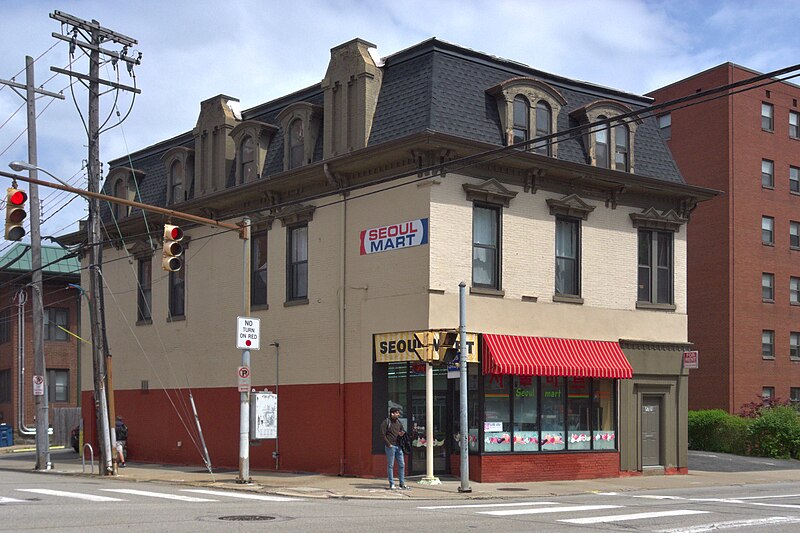
Baywood was the home of Alexander King, whose family married into the Mellons. Obviously Mr. King had some money himself. Old Pa Pitt does not know the architect, but Isaac Hobbs would not be an outrageous guess.





These two Second Empire storefronts could use a bit of paint, but the buildings, which probably date from the 1880s, have kept most of their decorative detail. The bricks show that the ground-floor fronts of both sides have been rebuilt, but the one at right probably looks very close to the way it looked when the building was new, and it could be a good model for restoring the one at left.

Like many of the houses in Allegheny West, this grand Second Empire house had a detailed history prepared by the late Carol Peterson, so old Pa Pitt will tell you only that it was built in 1880 for Gideon and Mary Hoffstot, and for the rest we can let Ms. Peterson take over.

On a street of mostly small vernacular rowhouses, this pair of grand Second Empire houses dominates the streetscape. They are well preserved and well cared for, and we need no more excuse to appreciate the details.

This front entrance (could you guess that the picture was taken the day after Halloween?) bears an unusual memento of the original owner of the house:

Note the monogram on the side of the steps. An 1890 map shows that the house belonged to a Jonathan Seibert.

Note the exceptionally elaborate door on the breezeway.

The 2100 block of Sidney Street has some of the finest high-Victorian houses on the South Side, and several of them have unusual decorative details worth a closer examination. Old Pa Pitt took an evening stroll down Sidney Street the other day and, as always, came back with a few pictures. We’ll start with No. 2109. Note the multiple shapes of roof slates, the woodwork in the dormers, and the rusticated lintels in the picture above.
Since we have fifteen pictures, we’ll put the rest below the fold to avoid slowing down the main page for a week.
(more…)
An album of fine Victorian houses from one block of Sarah Street on the South Side. These are not all the distinguished houses in this block: these are just the ones Father Pitt managed to get good pictures of in an after-sunset stroll.
Since we have fourteen pictures in this article, we’ll put the rest below the metaphorical fold to avoid weighing down the main page.
(more…)
Kraynick’s Bike Shop is a Pittsburgh legend, and it lives in a slightly bedraggled building that is so typically Pittsburgh it should never be improved. Now that Garfield is coming up in the trendy world, someone is likely to restore this Second Empire storefront sooner or later, but it retains so many layers of history, while still preserving so many original details (look at the roof slates, the brick cornice, the dentils on the third-floor dormers, the lintels above the second-floor windows), that it will be a shame when it is remade into a picture-book Victorian building.

Obviously built together, these two houses on Sarah Street have had their separate adventures. The one on the right has had its third-floor false balcony filled in to give an upstairs bedroom a little more space; the one on the left has grown an aluminum awning (because it is the South Side, after all). But both retain most of their original details, which are fairly unusual, a sort of Queen Anne interpretation of French Second Empire.

The ground floor has changed significantly, but the rest of this building is a well-preserved remnant of the times when this part of the East End was a quiet exurb of dignified gentlemen’s houses. It seems to have been built in the 1870s or early 1880s, and may always have been a corner store, since—unlike its neighbors—it was built right against the streets. Today it is the last building of its time left on Fifth Avenue for blocks in either direction, a curious anomaly among the high-rise apartments, office blocks, and monumental landmarks. It sits on the corner of Neville Street, technically in Shadyside but culturally more part of Oakland (Neville Street is the neighborhood border on city planning maps).
